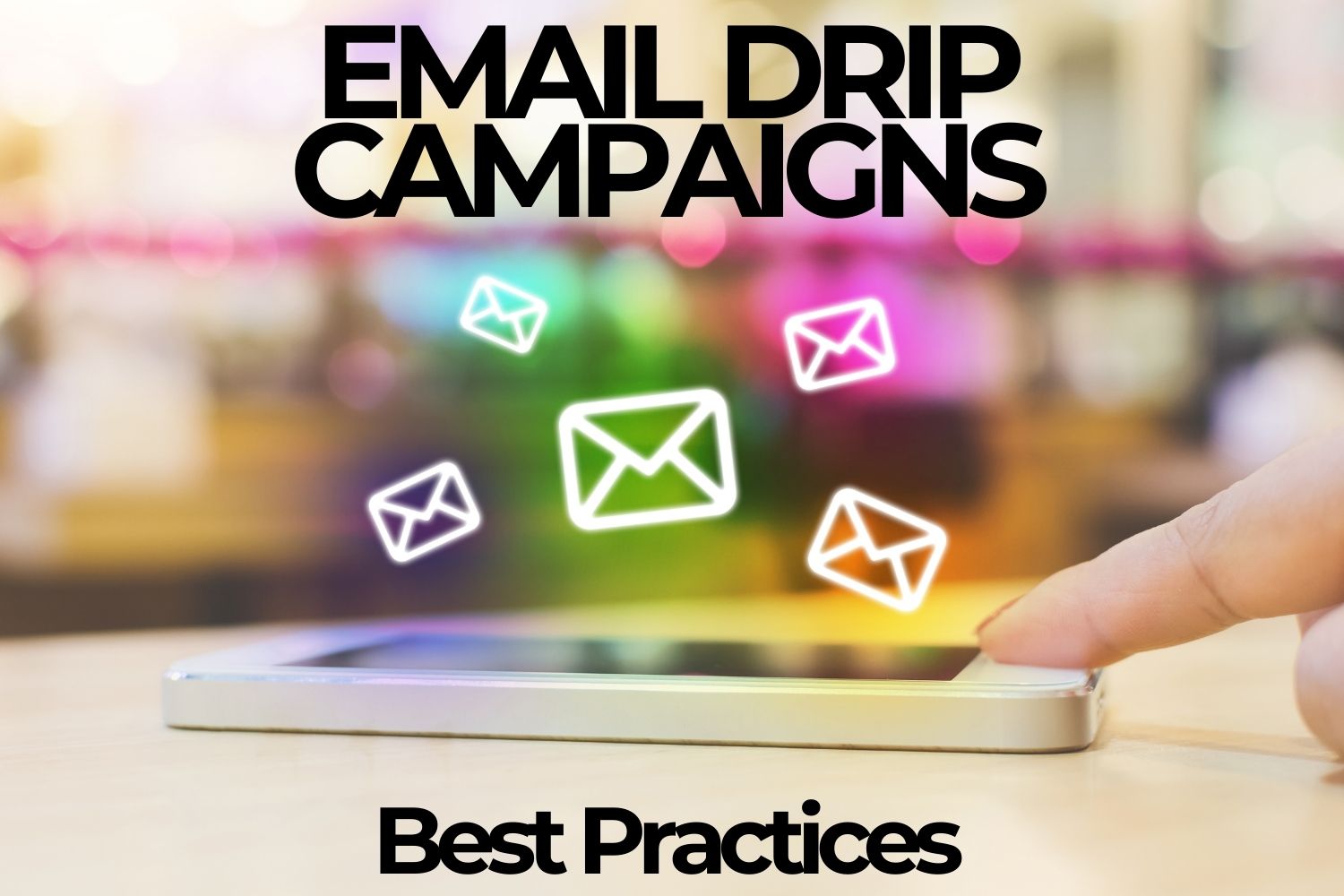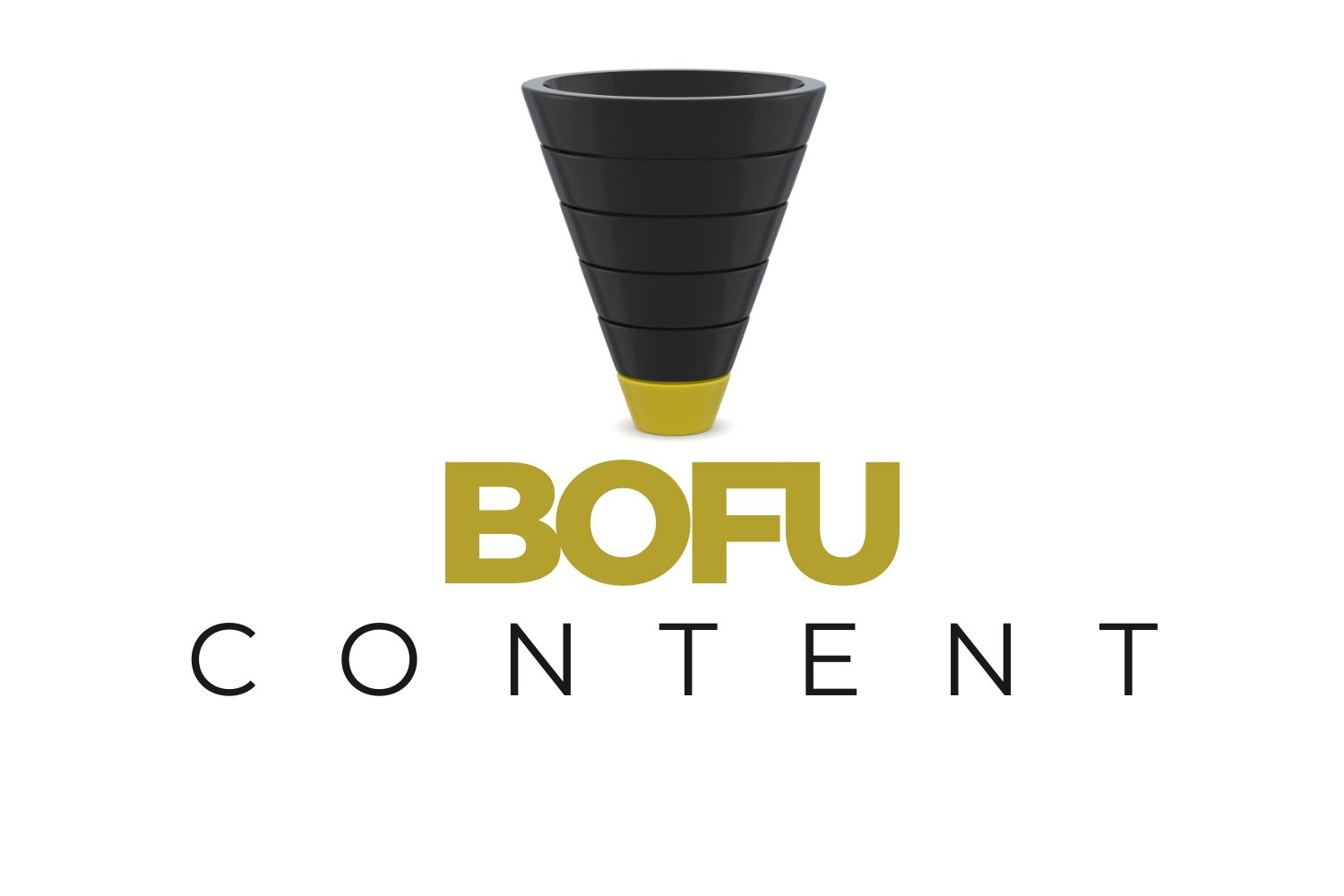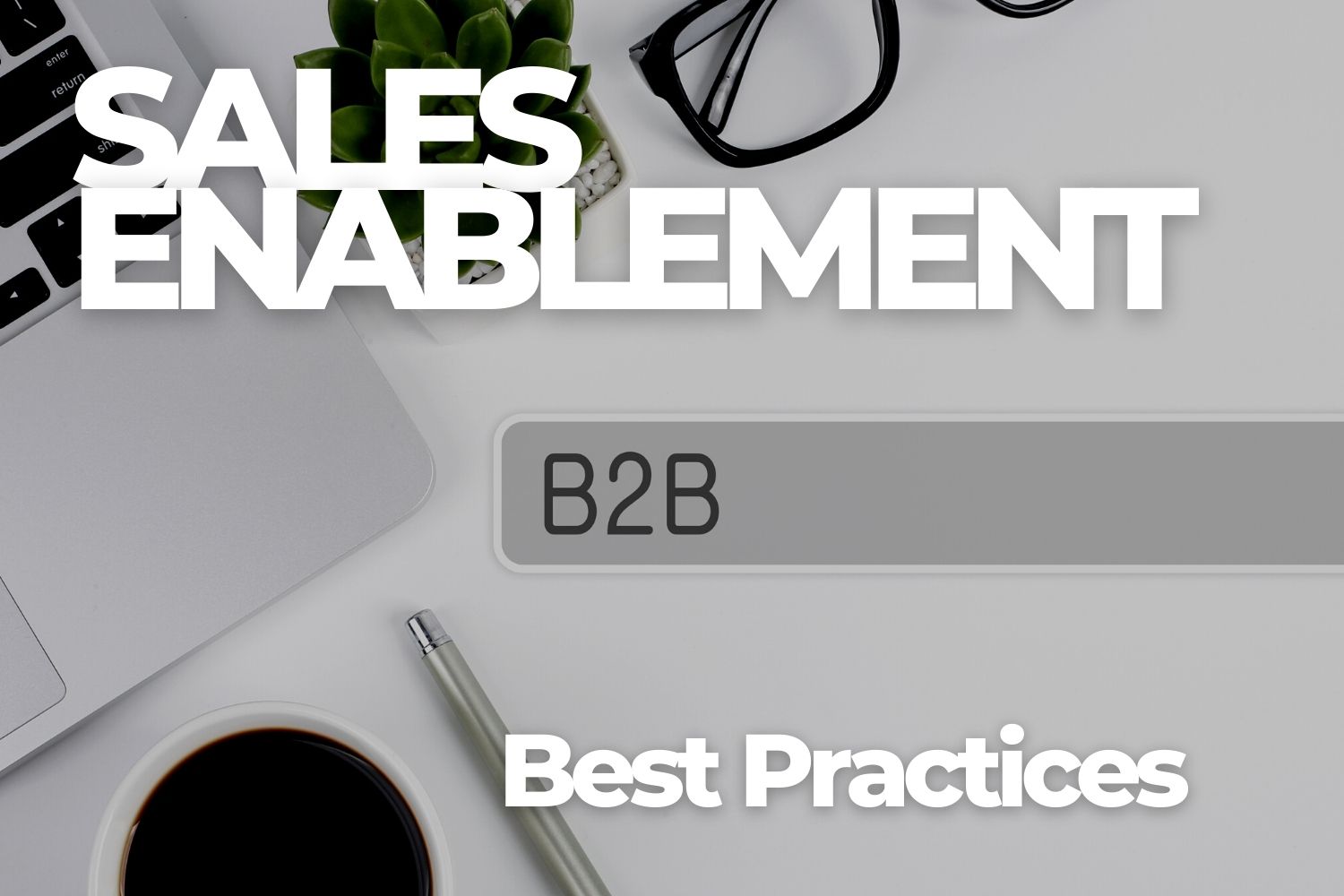Marketing works differently now.
Push is out. Pull is in.
You have to think inbound.
Traditional “outbound” marketing tactics that dominated the pre-Google world are now alarmingly ineffective. We all have the power to filter out advertising and we’re not afraid to use it.
The customer is in control. The communications process begins if and when the customer wants. Without advertising. Without phone calls. Without you.
Instead of pushing out messages via paid media, to reach this customer, you must put the power of content marketing, search, and social media to work. The relationship with your brand begins there.
SEO leads have a 14.6% close rate, while outbound leads
(such as direct mail or print advertising) have a 1.7% close rate.
~ Search Engine Journal
To be an effective marketer, you have to do a complete 180. The strategy is to pull people to your website with magnetic content.
Additional resource: introduction to inbound marketing.
Define objectives by beginning with the end in mind
“Our digital marketing isn’t working.”
The great thing about digital marketing is how easy it is to measure results. So if you say the program isn’t working, it’s only a valid assessment if you’ve defined what “working” actually means.
Your sales and marketing team must agree on the program’s objective. Objectives differ from company to company, site to site, and program to program. Generally speaking, the mission is to generate traffic, leads and sales.
Are you aiming to expand an email database? Sell off the page? Foster word of mouth?
You’re going to experience failure and success. Digital marketing is forever experimental. You know what you need to conduct a meaningful experiment, right?
You need an outcome.
Additional resource: fast-track approach to setting objectives and planning.
Create a sharp website to power your digital marketing machine
Kick ass and take names.
Getting people to visit and read your website is far too small a goal. It needs to produce a response. When visitors come and go, the site hasn’t performed the way it should.
Effective online marketers have realized it’s time to ditch the pitch. It’s not effective to preach. Your job is to teach. Must-have elements of an effective website include:
- A home page that immediately engages visitors.
- An easy to use content management system to power
a frequently updated, strategic blog. - Simple navigation and clear directions.
- Valuable, free offers that do not require any risk or commitment.
- Streamlined landing pages to collect contact information.
- Interactive features for commenting, asking questions, and sharing content.
The list of best practices is substantial. Don’t cut corners on your website. Hire top-notch professionals to make it a hard-working machine and keep it running strong.
Additional resource: robust lesson on conversion optimization.
Offer content online customers are looking for
Be a good helper.
In the information age, people seek information. There’s no question, they’ll find it—fast. The question is, will it be your information?
This is content marketing.
It’s not new. What’s new is the dynamic at work. Those shopping for content won’t be filling out tip-in cards, faxing requests, calling your number or putting forth any effort whatsoever. They’ll merely be clicking on a link.
Want to win their business? That link needs to lead to your website. There’s one way to get in the game: create mighty fine content. Develop and promote information assets.
Offer helpful content. Make it informative. Valuable. And free.
Additional resource: how a content marketing consultant can help your company.
Project your personality to identify who you are and who should care
Is anyone alive in there?
Most website visitors don’t stick around long because most websites are dreadfully dull.
You might be inclined to defend the pulseless pages of your site by saying you’re in a highly professional market, your customers are quite serious, your product isn’t sold on emotion, your management is conservative, and so on.
Baloney.
There’s no excuse for faceless websites. People do business with people. People they like and trust.
Your site needs to be expressive. It should be fun. Give your website a heartbeat. Give your visitors something to remember you by. Give them a reason to come back.
Above all, make certain your site highlights what your visitors cares about most: themselves.
Optimize with less obvious keywords for more success with search
Only one page really matters.
Welcome to the mysterious, magnificent, monumental world of search where an overwhelming percentage of online journeys begin.
You’ve surely noticed when you do a really broad one or two-word search you get millions, or even billions, of results. There are a mind-boggling number of pages you can click through. Yet you’ll look at just one. On that one page are ten results (of the organic search variety).
In marketing your website, your success depends on showing up on page one, preferably the top half. To do so requires a solid grasp of what it takes to make search work for your business. The winners carefully select keywords that have a worthwhile volume of search activity, but a relatively low level of competition.
The answers aren’t obvious. You need to employ the right tools and techniques. Make sure your team includes a search-savvy pro.
Additional resource: how to outmaneuver your competitors with keyword selection.
Your blog will generate traffic, leads and sales.
You need a blog. It’s every bit as essential to your digital marketing program as your website itself. It must be hosted at your domain and updated often.
The long list of benefits of maintaining a strong blog include:
- Traffic—Companies that blog generate far more website traffic.
- Influence—Creating articles about your area of expertise establishes
your authority. - Engagement—Your blog is the ultimate channel to engage your customers, inspire sharing, field questions and promote useful information exchanges.
The content you post should trace to your online marketing strategy at large. That is, its
contents—including each page’s URL, article title, copy, captions, tags, metadata, and call to action—should trace to your keyword strategy in support of your inbound marketing efforts.
It’s also wise to provide a subscription option (preferably via email), encourage user comments, and promote the sharing of your content with ultra-simple “click to share” social media widgets.
Additional resources: essential blogging tips.
Create a content production machine to crank out all kinds of great stuff
You’re going into the publishing business.
The most effective online marketers are media makers. Publishers.
You’ll need a team to publish great content consistently—no matter what size your company may be. Even a one man show will benefit greatly from calling on a variety of sources with different points of view.
If your company has multiple departments and specialists within, familiarize everyone with your marketing plans and build a task force to contribute to your blog and various forms of content.
If you’re a small company, you’ll want to expand your content creation team with outside resources including writers and producers of different forms of media.
Companies small or large should also seek guest contributors to their blogs. Many authors and content creators will happily oblige to your requests to publish their content. Curating content published elsewhere is also a viable strategy. These are win-win strategies for both parties. Your guests get additional exposure. You get useful content.
Additional resource: your guide to building a content team.
Retool and repurpose with more media to reach more people
You’re all over the place.
New media is mysterious, but we know one thing: everyone surfs the turf how they please. Different tastes. Different devices. Different consumption habits.
For the online marketer, this means to increase your chances of getting found, you have to make the rounds in every way possible way—across the spectrum of modern media.
You’ll stand fast on the central themes of your content, but you won’t stand still. To be effective, you’ll repurpose your content by calling on various media tools and recycling your ideas in interesting ways.
Thinking ahead will be infinitely valuable. You might create some big piece of cornerstone content—like an eBook or webinar—but then the plan will include repurposing the ideas it contains. Whatever’s e-centric can become printed and vise-versa. Whatever’s written might morph into a video, podcast or infographic.
The point is, to reach more people, you must consider the unpredictable dynamics of modern media consumption and forge a plan to be as accessible as possible.
Additional resource: creating ebooks and effective, repurposable content.
Social media is not a trend. It’s how we share ideas now. We’ve forever been social creatures. But now what we have to say is documented and amplified like mad. A tweet could carry the power of a Super Bowl commercial.
It might be a Yelp review. Could be a blog comment… a photo… an event update. Whatever it may be, social media brings power to the people. Somewhere, somebody is going to consume your message and take it to heart.
You need to take social media to heart. You might start simple. Learn your way around LinkedIn, or Twitter, or Facebook, or what have you. However, in the online marketing game, your goal is to identify where your prospects exchange information and engage them there.
You’ll make more connections than you could possibly imagine and expand your reach and influence. Social media will serve you well.
Additional resource: a (you-won’t-believe-it’s free) guide to social media marketing for beginners.
Expand your audience by publishing content that links back home
Your website is one in a billion.
The number of websites the world over is creeping toward a billion. Rest assured, however visited your site may be, other sites in your space attract bigger crowds. To be an effective online marketer, you need to build a bigger audience. How’s it done?
You fold into your plan a plan for having other websites point to yours. How’s that done?
Content. Magnetic content.
If you have your content creation machine firing the way it should, you have the potential to make your site a customer attraction force field. What you do is offer your content to prominent website owners (today’s modern media publishers). If your stuff attracts eyeballs and offers links, the links will get clicked.
You’ll generate traffic. Everyone wins. This is new media. New rules apply. Hyperlinks are hypercool.
Additional resource: free webinar about creating magnetic content.
Create compelling offers to put prospects in your pipeline
Give it away, give it away now.
Though businesses build websites and digital marketing programs with different objectives in mind, online marketers generally share a common goal. That is, find out who came to visit.
When a visitor comes and goes without giving up his or her ID, something didn’t click. And you don’t get the 411 you need to keep in touch.
To solve this problem you create compelling offers—free parting gifts. A small transaction will take place. Your prospect gets something of value: a report, eBook, subscription, demonstration, trial, or something like that. You get their contact information and the opportunity to send more information, maybe additional offers, when you choose.
This is a remarkably common approach because it works. Give away some valuable advice and in return you get leads.
Examples: free resources from Feldman Creative.
Would you like a free copy of “Digital Marketing Basics?” Please help yourself to the eBook version…
Use no-frills landing pages to collect leads
Hello and goodbye.
Technically, a landing page is the page your visitor lands on. Simple, eh? Keep it that way.
The assumption here is the incoming click is a response to an offer you made. Rather than have the information-seeker land in the lobby (otherwise known as your home page), you want to get right to business. No mussing or fussing.
The artwork, copy and every element of your landing page should quickly confirm the visitor is right where they ought to be. You’ve called for action and got it. Now you want to reward the prospect with a quick and easy protocol.
So be careful what you ask for. Request what you need. Nothing more. Refrain from serving up menus or options of any kind. Lengthy forms and questionnaires will reduce your response rate. Say hello, say goodbye, and thanks.
Additional resource: essential landing page tips.
Send smart email to continuously nurture leads
An email address is a terrible thing to waste.
Don’t let any gung-ho new media marketer tell you email is old school. An email database is your goldmine. Mine it.
By granting you access to an email address, your prospect is giving you permission to market to him or her. Of course, a prospect can opt-out just as easily as they opted-in, so be smart about your email program.
Refrain from heavy handed pitches and avoid sending a barrage of junk. Put yourself in the mindset of the customer. Think about the type of news, updates or offers you’d care to get, open, read, and act on.
With a thoughtful plan and careful pace, email marketing delivers a wonderful way to nurture leads and grow your business. Don’t waste this opportunity. Test your tactics. Refine as you go.
Additional resource: almost everything you need to know about email marketing.
Call for action to show prospects how to become customers
People love to buy.
Heard this one? “People don’t like to be sold to, but they love to buy.”
Your challenge is to help them.
Let’s be clear about something… this stuff we call inbound marketing or content marketing or online marketing: it’s marketing. To be effective, you have to make money. So however much you want to present prospects with valuable educational information, you also want to present an invoice.
Your off-site content should include a call to action that points people to your site. And on your site, every page should include a call to action to move your visitor to the subsequent stage of the buying process.
Yes, as an effective online marketer you want to gain the trust of your website visitors, but never forget, you want their credit card number too.
Foster word of mouth to take advantage of the most powerful form of advertising
Make it happen.
Word of mouth. It’s the most powerful form of advertising. Always has been.
It’s commonly understood we buy from those we know, like and trust. An obvious extension of the concept applies to referrals and recommendations.
Enter social media.
Research repeatedly reveals personal recommendations and online opinions rank above all else for trustworthiness, while traditional forms of advertising continue to sink. “Word of mouse” becomes an extremely powerful influencer.
As an online marketer, you need to offer social sharing buttons and integrate elements such as ratings, reviews, and recommendations systems. Your prospects seek the truth. Your challenge: promote friend-to-friend sharing and turn on the power of social commerce.
Additional resources: a very fun and informative post on social proof and word-of-mouth.
Embrace analytics to learn what works
Measure everything.
Effective online marketing feasts on a strict diet of perpetual analysis.
With your marketing objectives in mind, you’ll need to establish a set of key business indicators and tool your website to collect metrics regarding traffic, leads, and sales. Additionally, you’ll benefit from extracting data to detail your reach via your various online and social channels.
Over time, your analytics will also be used to determine your cost of leads and return on investment in social media marketing, search, blogging, and email programs.
As a starting point for your measurement activities, you’ll want to establish a Google Analytics account, which is free and easily implemented. Various other free tools can be called upon to track your progress in search rankings and a variety of powerful tools can be added to the mix as your analytic needs expand.
Whatever set of tools you put in place, the big idea is to be in-the-know as to which programs are falling short (and should therefore be eliminated or refined) and which are helping you achieve your goals (and should therefore be expanded).
Additional resource: content analytics simplified so it doesn’t scare the crap out of you.
The end…
(… doesn’t exist in digital marketing.)
You need to get on it now. And you need to keep at it endlessly.
Free gift: The Planner for Growing Your Business with Effective Online Marketing
It’s a workbook—offered as a downloadable PDF and interactive online worksheet. It’s the most comprehensive strategic workbook available for planning your digital marketing. And it’s free. Download it now by clicking the image here:











Comments
Allen Roberts
This a great post Barry.
My ‘patch’ is SME’s in Australia, and even now, after 10 years of evidence to the contrary, many still believe they can get a ‘website’ for $600. In fact they can, outsourcing it to someone on Fiverr, but like the old saying goes, it is like taking a rusty, short old knife to a gunfight.
Your post might give them another chance to grasp the reality of it.